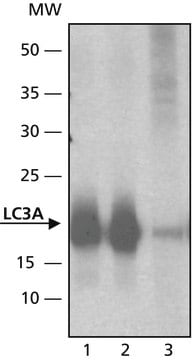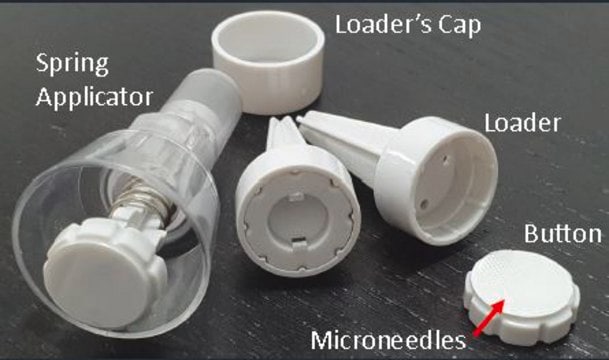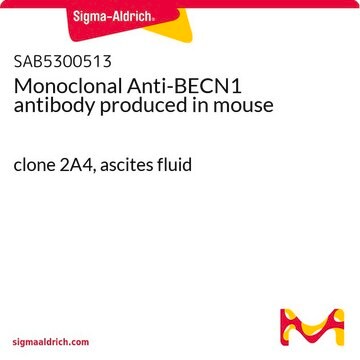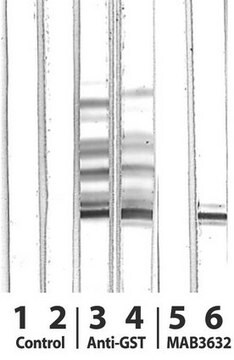ABC929
Anti-MAP1LC3A antibody
rabbit polyclonal
Synonim(y):
Microtubule-associated proteins 1A/1B light chain 3A, Autophagy-related protein LC3 A, Autophagy-related ubiquitin-like modifier LC3 A, MAP1 light chain 3-like protein 1, MAP1A/MAP1B light chain 3 A, Microtubule-associated protein 1 light chain 3 alpha
Wybierz wielkość
1810,00 zł
Przewidywany termin wysyłki22 kwietnia 2025Szczegóły
Wybierz wielkość
About This Item
1810,00 zł
Przewidywany termin wysyłki22 kwietnia 2025Szczegóły
Polecane produkty
Nazwa produktu
Anti-LC3-I/II Antibody, from rabbit, purified by affinity chromatography
pochodzenie biologiczne
rabbit
Poziom jakości
forma przeciwciała
affinity isolated antibody
rodzaj przeciwciała
primary antibodies
klon
polyclonal
oczyszczone przez
affinity chromatography
reaktywność gatunkowa
human
reaktywność gatunkowa (przewidywana na podstawie homologii)
Xenopus (based on 100% sequence homology), rat (based on 100% sequence homology), porcine (based on 100% sequence homology), mouse (based on 100% sequence homology), zebrafish (based on 100% sequence homology), bovine (based on 100% sequence homology)
metody
immunocytochemistry: suitable
western blot: suitable
numer dostępu NCBI
numer dostępu UniProt
Warunki transportu
wet ice
docelowa modyfikacja potranslacyjna
unmodified
informacje o genach
human ... MAP1A(4130) , MAP1LC3A(84557)
Opis ogólny
Specyficzność
Immunogen
Zastosowanie
Apoptosis & Cancer
Apoptosis - Additional
Jakość
Western Blotting Analysis: A 1:500 dilution of this antibody detected LC3-I (non-lipidated) and LC3-II (lipidated) in 10 µg of serum-starved, chloroquine-treated HeLa cell lysate.
Opis wartości docelowych
Powiązanie
Postać fizyczna
Przechowywanie i stabilność
Inne uwagi
Oświadczenie o zrzeczeniu się odpowiedzialności
Nie możesz znaleźć właściwego produktu?
Wypróbuj nasz Narzędzie selektora produktów.
polecane
Kod klasy składowania
12 - Non Combustible Liquids
Klasa zagrożenia wodnego (WGK)
WGK 1
Temperatura zapłonu (°F)
Not applicable
Temperatura zapłonu (°C)
Not applicable
Certyfikaty analizy (CoA)
Poszukaj Certyfikaty analizy (CoA), wpisując numer partii/serii produktów. Numery serii i partii można znaleźć na etykiecie produktu po słowach „seria” lub „partia”.
Masz już ten produkt?
Dokumenty związane z niedawno zakupionymi produktami zostały zamieszczone w Bibliotece dokumentów.
Klienci oglądali również te produkty
Produkty
Autophagy is a regulated process involved in cell growth, development, and recycling of cytoplasmic components in cells.
Active Filters
Nasz zespół naukowców ma doświadczenie we wszystkich obszarach badań, w tym w naukach przyrodniczych, materiałoznawstwie, syntezie chemicznej, chromatografii, analityce i wielu innych dziedzinach.
Skontaktuj się z zespołem ds. pomocy technicznej













